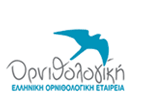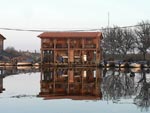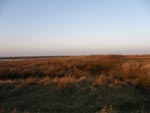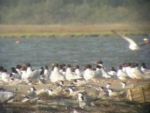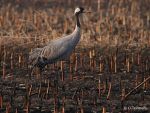|
GR028 Axios, Loudias, and Aliakmon estuaries
 |
 |
Criteria: A1, A4i, A4iii, B1i, B2, B3, C1, C2, C3, C4, C6
Coordinates:
40o 30' N
22o 43' E
()
|
Altitude: 0-5 m
Area: 20000 ha
|
|
 |
 |
Images
Site Description
A coastal wetland of small lagoons, sandflats, and alluvial forests dominated by Tamarix, Alnus , and Salix. Human activities include rice production, livestock farming, fishing and mussel culture.
 |
 |
Habitats: Artificial landscapes (30%, Arable land), Forest (10%, Alluvial and very wet forest), Wetland (60%, Coastal lagoons; Rivers and streams; Salt marshes; Tidal rivers and enclosed tidal waters; Water fringe vegetation)
Land use: agriculture (80%), fisheries/aquaculture (30%), hunting (50%), nature conservation and research (30%), tourism/recreation (10%)
|
 |
 |
Protection status
National Partial International Partial
2,381 ha of IBA covered by Wildlife Refuge (Stergiou-Aliakmon/Aiginiou, 2,381 ha). 1,200 ha of IBA covered by Wildlife Refuge (Delta Aliakmona/Kleidiou, 1,200 ha). 2,150 ha of IBA covered by Wildlife Refuge (Delta Axiou-Chalastras, 2,150 ha). Part of IBA overlaps with Protected Area. 11,808 ha of IBA covered by Ramsar Site (Delta Axiou, Loudia and Aliakmon-Alyki Kitrous, 11,808 ha).
27800 ha of the IBA are covered by Special Protection Area (SPA) DELTA AXIOU-LOUDIA-ALIAKMONA-ALYKI KITROUS(GR1220010).
Birds
This is a very important site for breeding, passage and wintering waterbirds. Species of global conservation concern that do not meet IBA criteria: Aythya nyroca (passage), Haliaeetus albicilla (wintering), Aquila clanga (1- 3 wintering individuals), Gallinago media (passage). The site holds 20,000 or more waterbirds in winter, on a regular basis (including Phalacrocorax pygmeus 5,000; Anas penelope 1,000; Calidris alpina 2,500; Larus ridibundus 7,000; Larus cachinnans 5,000).
| Species | Season | Year | Min | Max | Acc | Criteria |
|---|
| Limosa limosa Black-tailed Godwit | passage | 1990 | 100 | 4000 | average | B1i, C3
|
| Numenius tenuirostris Slender-billed Curlew | passage | 0 | 1 | - | average | A1, C1
|
| Haematopus ostralegus Eurasian Oystercatcher | breeding | 1996 | 5 | 15 | average | B1i, C3
|
| Himantopus himantopus Black-winged Stilt | breeding | 1996 | 100 | 150 | good | B1i, C2
|
| Recurvirostra avosetta Pied Avocet | breeding | 1996 | 50 | 70 | good | B3, C6
|
| Charadrius alexandrinus Kentish Plover | breeding | 1990 | 50 | 100 | average | B1i, B2, C3
|
| Glareola pratincola Collared Pratincole | breeding | 1996 | 50 | 100 | average | A4i, B1i, B2, C2
|
| Larus cachinnans Yellow-legged Gull | winter | 1990 | - | 5000 | average | A4i, B1i, C3
|
| Larus melanocephalus Mediterranean Gull | breeding | 1996 | 800 | 1400 | average | A4i, B1i, B3, C2, C6
|
| Sterna albifrons Little Tern | breeding | 1996 | 70 | 130 | average | B2, C6
|
| Phalacrocorax pygmeus Pygmy Cormorant | winter | 1997 | 5000 | - | good | A1, A4i, B1i, C1, C2
|
| Egretta garzetta Little Egret | breeding | 1990 | 274 | 700 | good | A4i, B1i, C2
|
| Ardeola ralloides Squacco Heron | breeding | 1990 | 150 | 300 | good | A4i, B1i, B2, C2, C6
|
| Nycticorax nycticorax Black-crowned Night-heron | breeding | 1990 | 420 | 800 | good | A4i, B1i, B2, C2, C6
|
| Ixobrychus minutus Little Bittern | breeding | 1990 | 30 | 80 | poor | B2, C2, C6
|
| Platalea leucorodia Eurasian Spoonbill | breeding | 1995 | 16 | 50 | good | B1i, B2, C2, C6
|
| Pelecanus crispus Dalmatian Pelican | passage | 1990 | 5 | 50 | average | A1, A4i, B1i, C1, C2
|
| Calandrella brachydactyla Greater Short-toed Lark | breeding | 1990 | Frequent | unknown | C6
|
|
Conservation issues
Threats include illegal housing, intensive livestock farming, and water pollution from industry and intensive agriculture. Conservation projects have included LIFE projects on Numenius tenuirostris, Phalacrocorax pygmeus , and Anser erythropus . The area is a candidate SAC.
 |
 |
Threats:
agricultural intensification/expansion (high), construction/impact of dyke/dam/barrage (low), dredging/canalization (high), industrialization/urbanization (high), unsustainable exploitation (medium)
|
 |
 |
Source:
Copyright © Hellenic Ornithological Society
|
|

Do you know the area?
Send us your comments at iba@ornithologiki.gr
If you have noticed serious damage to the area and you want to report it please click here
 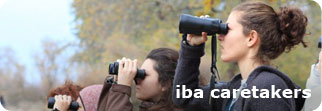
|

